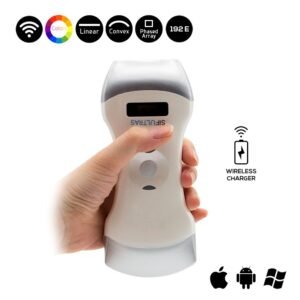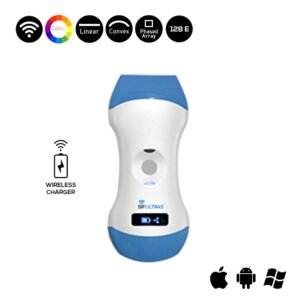The Use of Ultrasound in Hospice and Palliative Care
Hospice and palliative care both offer compassionate care to patients with life-limiting illnesses. Hospice care is used when the disease gets to the point when treatment can no longer cure or control it. In general, hospice care should be used when a person is expected to live about 6-month or less if the illness runs its usual course.
But palliative care can be used as a separate medical practice while the patient is receiving treatment. It aims to reduce symptom burden and enhance the quality of life for those with a terminal disease.
Ultrasound has become an increasingly popular diagnostic and therapeutic modality due to its low cost, ease of portability, safety, and good patient acceptance. It has the potential to make a meaningful impact in the field of Hospice and Palliative Care.
Which Ultrasound Scanner is the best for Hospice and Palliative Care?
Using Ultrasound imaging in palliative care patients may provide valuable insight into therapy responsiveness. Indeed, the most suitable ultrasound scanner to be used in this field is a 3 in 1 Ultrasound, which serves various medical practitioners and specialties.
For instance, the 3 in 1 wireless ultrasound SIFULTRAS-3.3, SIFULTRAS-3.31, and SIFULTRAS-3.32 each include convex, linear, and cardiac scan modes in the same probe. They are highly recommended to be used as a point of care Ultrasound in internal and external medicine.
On the one hand, the 3.5 to 5 MHz Convex probe is mainly for OB/GYN, kidneys, Urinary, liver… etc. The liver is one of the most common metastases due to dual blood supply hepatic artery and vein and high blood flow. Detection of hepatic metastases usually means that curative therapies are no longer useful.
For this reason, using 90 to 305 mm depth-convex probes that have a high sensitivity in the detection of these hepatic lesions and thus ultimately can provide useful prognostic information for patients and their families.
On the other hand, the 7.5 to 10 MHz Linear transducer of the SIFULTRAS-3.3 provides qualitative and quantitative data. Its smaller footprint aids in the evaluation of soft tissues, joints, nerves, and muscles.
Further, the linear ultrasound scanner is a highly effective point of care ultrasound scanner. It can be used in the evaluations of; MSK (Muscular-skeletal), Vascular, etc. Also, It can serve many medical fields, from Orthopedics, Pediatrics, Sports medicine to emergency/ critical care.
Besides, the Cardiac probe. This probe does not only gratify cardiologists of its effectiveness, but also emergency doctors, etc. Its lower frequency (3.5-5 MHz) allows the practitioner to make PW measurements to accurately and precisely diagnose not only the blood flow velocity but also echocardiograms in general.
Moreover, SIFSOF ‘s engineering team developed the FDA 3 in 1 Color Doppler Ultrasound Scanner SIFULTRAS-3.31 which it also serves in any medical facility. Thanks to its easy-to-use interface, no special training is required to use the SIFULTRAS-3.31. It is lightweight, easy to carry, and easy to use.
Yet, for better image quality our medical and development team always recommends the SIFULTRAS-3.32 which has 192 elements and tends to be used in several fields such as Gynecology, Cardiology, Urology, Anesthesiology, And Vascular Surgery…
Most importantly, it allows for real-time visualization of structures. Thus it has been widely used to diagnose tumors of the breast, prostate, uterine, kidney, liver, and pancreas. Due to its lightweight, it helps health care providers to visit critically ill patients wherever they are, so that makes it easier to diagnose them less painfully.
In brief, Ultrasound Scanner has seen a range of uses in the medical industry of regular use in a variety of specialties. However, the use of ultrasound in the field of Hospice and palliative care has been scarcely mentioned.
Since Ultrasound is a cost-effective, non-invasive and compact device, it works nicely as a model of palliative care that hopes to increase the quality of life for those who are terminally ill and therefore less mobile and desiring the least invasive possible means of diagnosis and treatment.
References: Palliative Ultrasound for Home Care Hospice Patients, The use of Ultrasound in Palliative Care and Hospice, The use of Ultrasound in Palliative Care and Hospice.



